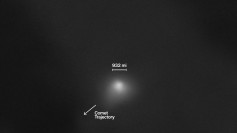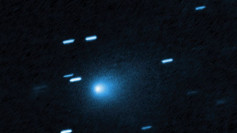Two rockets will be launched into the core of the northern lights, according to researchers.
Scientists plan to fire two rockets filled with sensing tools into the active aurora borealis, led by Clemson University astronomer Stephen Kaeppler. They intend to measure the aurora's winds, temperatures, and concentrations of plasma.
NASA's Ion-Neutral Coupling during Active Aurora mission has a launch window that goes from Mar. 23 to Apr. 1; another window occurs from Apr. 3 to 7. The launch on Wednesday was canceled due to inclement weather.
The aurora forms when charged particles from space collide with molecules in Earth's upper atmosphere. These collisions increase the energy of the electrons in these air molecules, causing them to orbit their nuclei at a higher energy level.
When the buzz wears off, the electrons return to their original energy level, releasing a photon, or light particle, in the process. These photons are responsible for the shifting curtains of green, violet, and red that may be observed at polar latitudes.
The boundary between neutral gases in the atmosphere and plasma, or charged gas that becomes increasingly prominent in the higher atmosphere, is of interest to Kaeppler and his team. The aurora's molecular disturbance disrupts the boundary layer between neutral gases in the lower atmosphere and plasma in the upper atmosphere. Friction and heat are produced as a result of the disturbance, which researchers can quantify.
"We all know that [if] we rub our hands together, you're going to get heat," Kaeppler said in a statement. "It's the same basic idea, except we're dealing with gases now instead."
As it flies to a height of 186 miles, the first of the team's rockets will emit colorful gases. These vapors, which are identical to the chemicals used to color fireworks, will travel in the atmosphere, allowing researchers to track atmospheric wind. The next rocket is intended to reach a maximum altitude of 125 miles in order to transport sensors for measuring temperature and density within the aurora. After taking their measurements, the rockets will return to Earth.
The findings should shed light on how the aurora modifies the border layer between neutral gas and plasma, according to Kaeppler's statement. The barrier may rise higher, fall lower, fold, or change shape.
"All of these factors make this an interesting physics problem to examine," Kaeppler said.
The rockets took off from the Poker Flat Research Range, which is located north of Fairbanks, Alaska.





